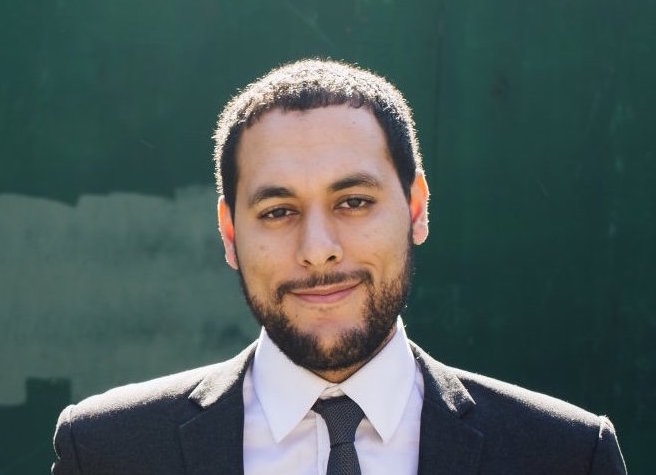
BY LINCOLN ANDERSON | Christopher Marte announced on Wednesday that he intends to mount a third-party campaign against Margaret Chin and run on the Independence Party line in the Nov. 7 general election.
In addition to Chin — the two-term Democratic incumbent, who is seeking a third and final four-year term — and Marte, another candidate, Aaron Foldenauer, will be running on the Liberal Party ballot line on Nov. 7.
Marte finished a close second to Chin in the Sept. 12 Democratic primary, losing by a mere 222 votes. Foldenauer finished a distant third in the four-person race, and Dashia Imperiale came in fourth.
Showing weakness on Chin’s part, she could not even win a simple majority of the vote, only getting 46 percent of the total.
The district includes Lower Manhattan, the South St. Seaport, Southbridge Towers, Battery Park City, Tribeca, the Lower East Side, Little Italy, Chinatown, Soho, Noho and part of Greenwich Village.
Running on a third-party line in a general election — especially in an overwhelmingly Democratic town like New York — is always a challenge since many people just “vote the straight party line” for Democrats. But Marte, 28, said his strong showing in the primary gives him confidence that he really could pull off a win.
“I think what we saw in the primary is the majority of people voted against our councilperson,” Marte told The Villager Wednesday. “I think our job over the next five weeks is to get the message out, to elect a councilperson who’s going to communicate to the community, hold town halls and push back on overdevelopment.”
As for Foldenauer’s presence on the the ballot, Marte said, “I think the race is between me and the councilperson. What we showed in the primary is we were able to get support throughout this district.
“Everyone has the right to run,” he added.
A Chin spokesperson said she is confident of winning re-election.
“Councilwoman Chin is proud to be on the Democratic and Working Families Party lines this November,” said Jake Dilemani. “Democrats sent Councilwoman Chin to victory in the Democratic primary election based upon her strong record of preserving and expanding affordable housing and standing up for tenants. Councilwoman Chin looks forward to speaking with Lower Manhattan voters between now and November, as well as to another four years on the Council, where she will continue her work to make New York a more livable, affordable city for all.”
Foldenauer, for his part — in a press release that threw everything, including the kitchen sink, at Marte — claimed that he, Foldenauer, is the true “anti-establishment candidate.”
“I am running a truly independent campaign with the support of the Liberal Party, which has a history of backing candidates independent of the failed establishment,” he said.
Marte has been endorsed by many of the area’s leading local Democratic clubs, including Village Independent Democrats, Downtown Independent Democrats and Village Reform Democratic Club. Marte has strongly condemned the sale of Rivington House to private developers and is a staunch defender of the Elizabeth St. Garden.
Despite being called a spoiler, Foldenauer said it was, in fact, Marte who blew the primary.
He further said the low turnout in the election was because the “activists” supporting Marte failed to get out the vote. However, the turnout was not really lower than usual.
The Villager asked longtime New York City political consultant Hank Sheinkopf his thoughts about whether a third-party candidate could actually win a general election in Lower Manhattan.
“This is an advertisement for election-law reform,” Sheinkopf said. “In California, nonpartisan primaries work, and people vote for the Democrat anyway.”
In other words, anyone can vote in California’s primary elections — they don’t have to be registered in a particular party.
“Generally, in New York City, the elections are decided in the primary,” Sheinkopf said. “It’s not impossible, but don’t hock the house, don’t bet the farm,” he said of the chances of third-party candidates winning in heavily Democratic districts like District 1.
“If there’s any hope for change, it’s that young voters come out and get more sophisticated in their voting,” he noted.
Yet, on primary day, one poll worker in the South Village — showing a chart he had jotted down for one election district — lamented the fact that only one or two voters in their 20s had turned out. Most of the voters in that particular E.D. were senior citizens, he noted. It’s a very concerning trend, the poll worker said.
“There’s nothing at the top of the ballot to bring people out,” Sheinkopf added of the lack of bigger races on Nov. 7. “De Blasio has wrapped it up.”
Although Sheinkopf has helped run winning campaigns for several judges on the Liberal Party line — including the late Harold Baer — he said the system simply is geared against third-party candidates.
“It’s hard to win ‘off the line,’” he said. “The present system is fixed for incumbents. The progressives are not progressives at all — they’re the system’s maintainers.”

















